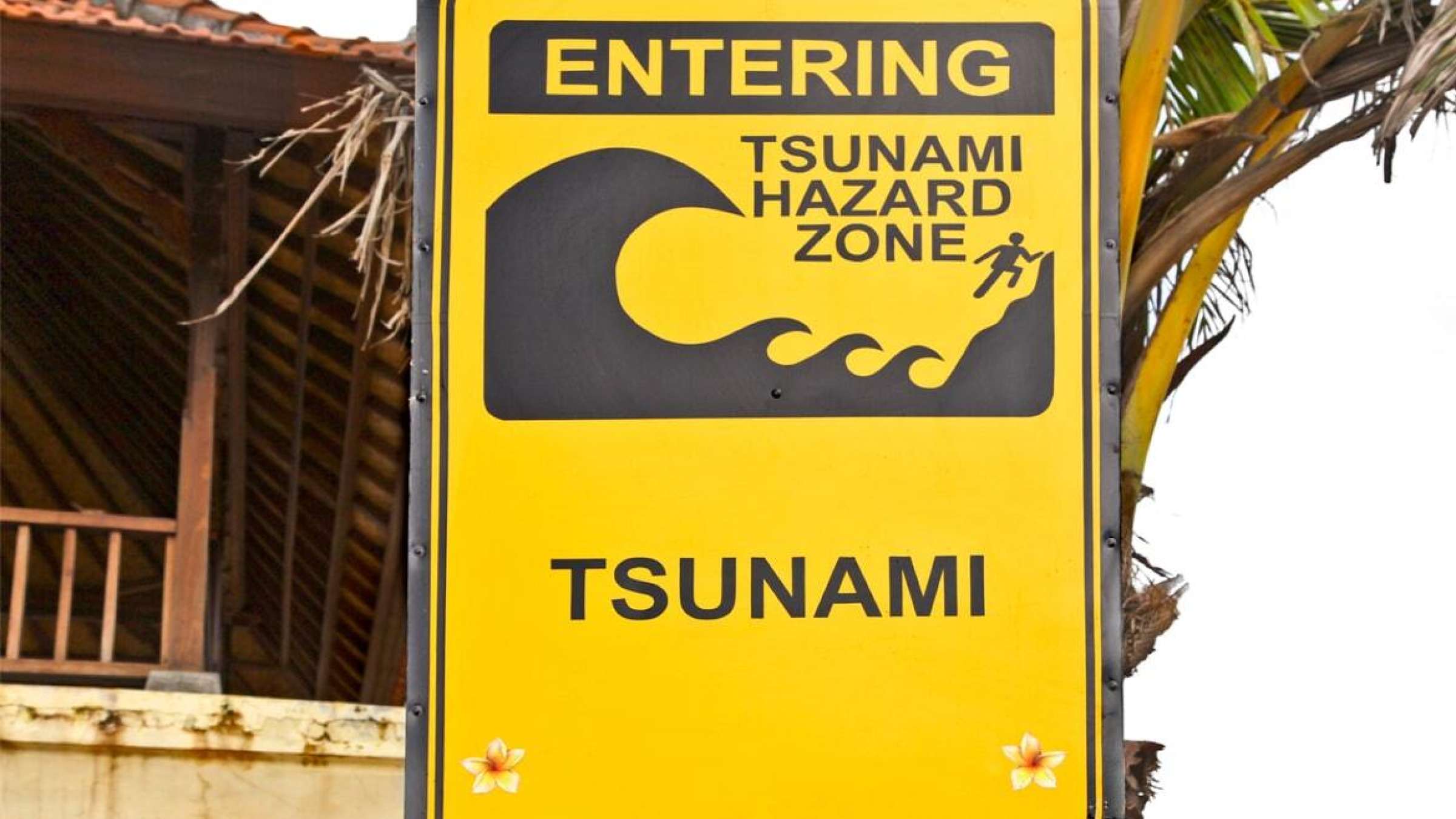How business can contribute to tsunami preparedness: Examples from Fiji, Haiti, and Sri Lanka

A tsunami is a series of giant waves typically caused by an earthquake or underwater volcanic eruption. Tsunami waves may travel as fast as jet planes over deep waters, and causes damage and destruction when it hits land through flooding, wave impacts, erosion, strong currents, and floating debris. There is also a high risk when the water returns to the sea, taking debris – and people – with it.
Tsunamis can cause loss of life and mass injuries as well as damage to buildings, ports, and critical services such as power, sewage, and water. These impacts are often in addition to the effects of the preceding earthquake(s), and can be compounded by secondary hazards ranging from fires to transportation accidents, hazardous material release into the environment, and more.
To be prepared for a tsunami means understanding official alerts as well as natural signs of a tsunami and making plans to stay safe – from knowing the evacuation plan and routes.
In support of government efforts to raise awareness and prepare vulnerable communities for the possible occurrence of a tsunami, other stakeholders such as business networks may organize activities to contribute to tsunami preparedness.
Examples of business engagement in Tsunami preparedness from Fiji, Haiti, and Sri Lanka
Several CBi Member Networks are active in Tsunami preparedness, organizing awareness raising activities as well as simulation exercises and more. Below are a few examples.
The Fiji National Disaster Awareness Week, celebrated in early October to align with the International Day for Disaster Risk Reduction (IDDRR), offered myriad activities including a National Simulation Exercise (SIMEX) focused on Tsunami evacuation drills to test procedures, and a disaster risk reduction Exhibit. This exercise involved employers, civil servants, community members, and over 600 students. It was a key element in the week’s aims of better preparing different groups and communities as well as build the resilience of communities by ensuring they are better equipped to cope with the impacts of disasters.
The Fiji National Disaster Awareness Week was organized by the Fiji National Disaster Management Office with private sector support coordinated through the Fiji Commerce and Employers Federation (FCEF) Fiji Business Disaster Resilience Council (FBDRC), a CBi Member Network. This year, the Assistant Secretary General and Special Representative General for Disaster Risk Reduction, Mami Mizutori, attended alongside representatives from other Pacific island countries including Cook Islands, Kiribati, Nauru, Palau, Papa New Guinea, Samoa, Solomon Islands, Tuvalu, and Vanuatu.
In Haiti, the CBi Member Network Alliance pour la Gestion des Risques et la Continuité des Activités (AGERCA) did a campaign on social media and leveraging their various communications channels to raise awareness around tsunami risks in Haiti and how to prepare for such an event, culminating in a webinar to share more information and facilitate a conversation on the topic. These efforts ties in to their on-going activities related to early warning systems and alerts.
The Asia-Pacific Alliance for Disaster Management Sri Lanka (A-PAD SL), a CBi Member Network, was part of the collaborative effort whereby Sri Lanka was one of 28 countries that participated in the Indian Ocean Wave Exercise 2023, organized by the UNESCO Intergovernmental Oceanographic Commission. The select scenario started with a magnitude 9 earthquake in the Andaman trench off the west coast of Nicobar Islands in India. With various agencies and institutions on board, the goal was to assess the robustness of the early warning system and evaluate the efficacy of evacuation procedures for vulnerable communities across the three coastal districts of Galle, Matara, and Trincomalee. Various schools and communities participated, extending to more than 1200 students, parents, teachers, and other staff.
A-PAD SL took part in the exercise, presenting a debrief on the day’s proceedings and facilitating a conversation collecting feedback from the various stakeholders.
Other examples exist; these are just a sampling to give a sense of how business networks can engage in different ways based on context.
Preparing for tsunamis and fighting inequalities for a resilient future
As said by Mami Mizutori, Special Representative for the United Nations Secretary General on Disaster Risk Reduction, “In four villages in Indonesia, the 2004 tsunami killed four times more women than men, and in Japan, following the 2011 earthquake and tsunami, authorities reported that persons with disabilities accounted for nearly 25% of the deaths in three prefectures, even though they accounted for a mere 7% of the population. Tsunamis can destroy entire towns and erase decades of development, and their impact is uneven. We need a whole-of-society approach to disaster risk reduction that leaves no one behind.”
That is why it is essential to continue fostering public-private partnerships that engage businesses and private sector networks to raise awareness of risks and preparedness measures that can save lives and livelihoods in case of a tsunami.
Is this page useful?
Yes No Report an issue on this pageThank you. If you have 2 minutes, we would benefit from additional feedback (link opens in a new window).